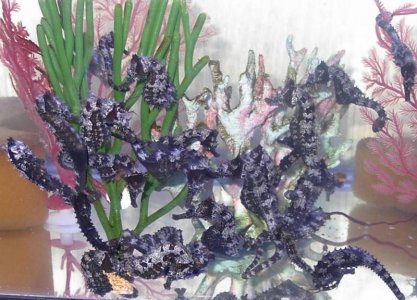The peroxide is for sterilization.
CT, you add 250ml of peroxide to 750ml of the culture water with the hatched brine cysts in it and using strong aeration, so, you need the container to be at least one liter, or, scale back the amounts of both for a smaller container.
Then, remove the airline to allow settlement of the nauplii to the bottom.
Five minutes after removing the airline, siphon off the nauplii from the bottom of the container, being careful not to siphon up the guck from the upper layers. Collect in an appropriate mesh and rinse with room temperature water before feeding them to the fry, or transferring to an enrichment container.
I don't know what others do but I sterilize at whatever step I am going to feed to the fry after. As I enrich, I sterilize after enrichment.
Remember that the nauplii CAN'T feed until they reach the second instar stage as they don't have a completed digestive tract at instar one. For me I use a general guideline of 24 hours hatching, 24 hours growout to instar II, and enrich with Dan's Feed for two 12 hour stages with new water and new enrichment for each 12 hour stage.
Some people like the peroxide aiding in separation of the nauplii from the cysts and garbage but it can be done without and then transfer to a growout/enrichment container from which you can remove some, sterilize, and add to the fry.
Remember that the nauplii star using the egg sack as soon as they emerge, and because they emerge at differing times, by the time the last ones have hatched, the first ones are quite diminished in nutrition so if you have need of food before you have enriched the nauplii, then start separating hatched nauplii as soon as you can see there are sufficient to harvest, leaving the remainder to continue hatching for later enrichment.
Phyto, unless you have a good blend of types, is not sufficient for enrichment.
Use the Selco, or Dan's Food is even better using a blender for minimum two minutes to micronize the particles, Selco or Dan's Food.

